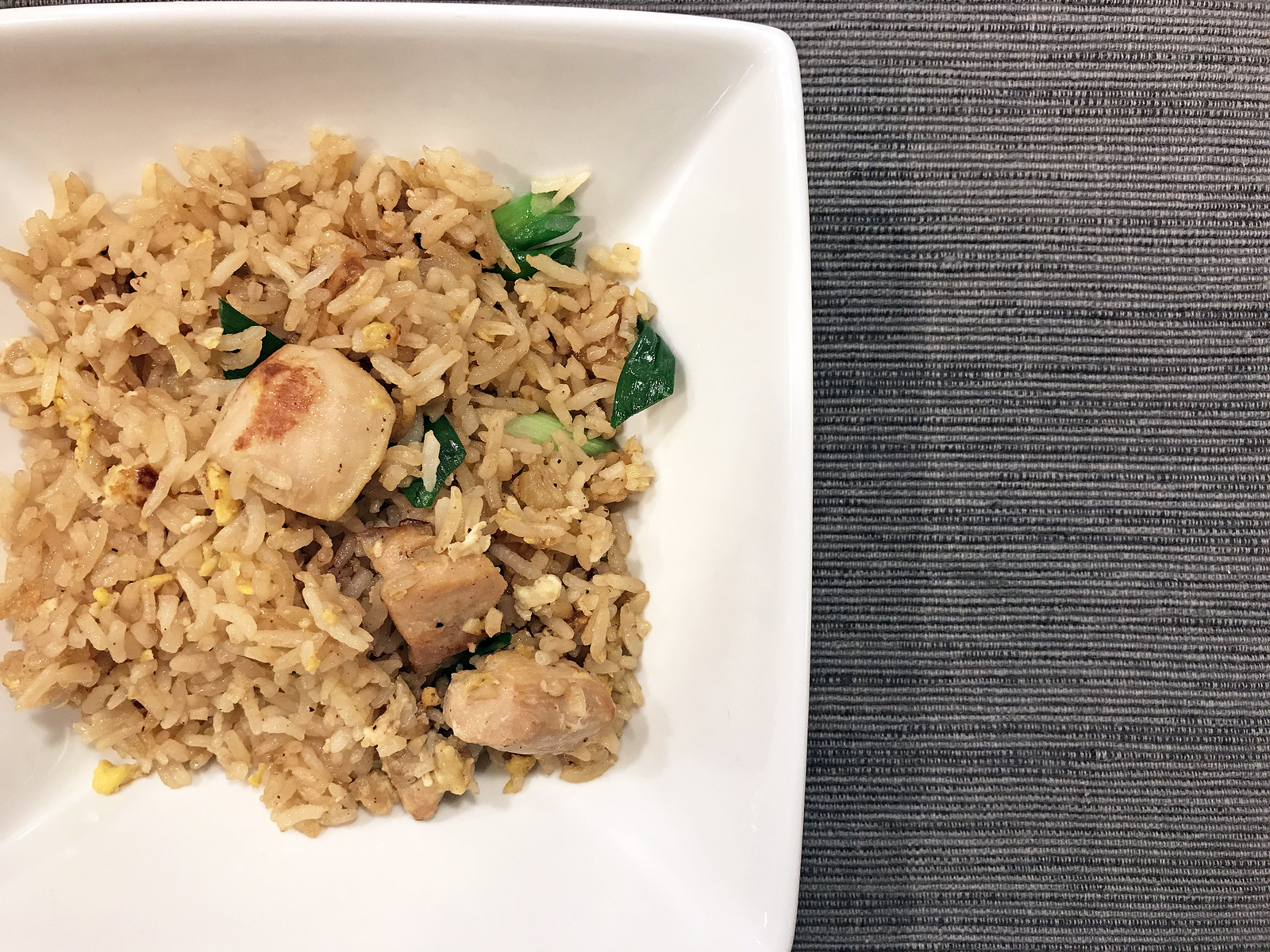Looking for something easy and delicious to hit the spot mid-week? Something to brighten your drab Monday, perhaps? Look no further. This fried rice couldn’t be easier to pull together and well, fried rice is the ultimate comfort food. Weeknight eating isn’t so bad after all.

Ingredients:
2 tablespoons vegetable oil
1/2 yellow onion, thinly sliced
1/2 pound chicken thigh
1 teaspoon lemongrass, minced
2 teaspoons garlic, minced
2 eggs
4 cups steamed jasmine rice, cooked and cooled
1 1/2 teaspoons sugar
1 tablespoon Thai seasoning sauce
1 tablespoon oyster sauce
2 green onions, cut into 2-inch lengths
salt
pepper
1/2 cup fish sauce
juice of 1 lime
1 teaspoon minced bird’s eye chilis
1. Place the chicken in a bowl, add half the garlic, all of the minced lemongrass, a pinch of salt and pepper, and enough cold water to just cover the chicken. Mix and let marinate at room temperature for 30 minutes. Remove from brine and cut into bite-size pieces.
2. Make the prik nam pla serving sauce: in a small bowl, mix together the fish sauce, lime juice, chilies, and remaining teaspoon garlic. Set aside.
2. Heat a wok over high heat and then add the oil. Add the onion and stir-fry until softened, then add the chicken and stir-fry until almost cooked, about 4 minutes.
3. Crack in the eggs and mix with the chicken and onion. Once the egg resembles a soft scramble, add the rice, sugar, Thai seasoning sauce, and oyster sauce, stirring the rice to distribute the sauce evenly and break up the egg. Continue to stir-fry until rice has taken on a slightly toasted color, about 2 or 3 minutes.
4. Remove from the heat, add the green onion and a pinch of pepper, and toss. Serve with the prik nam pla sauce.




